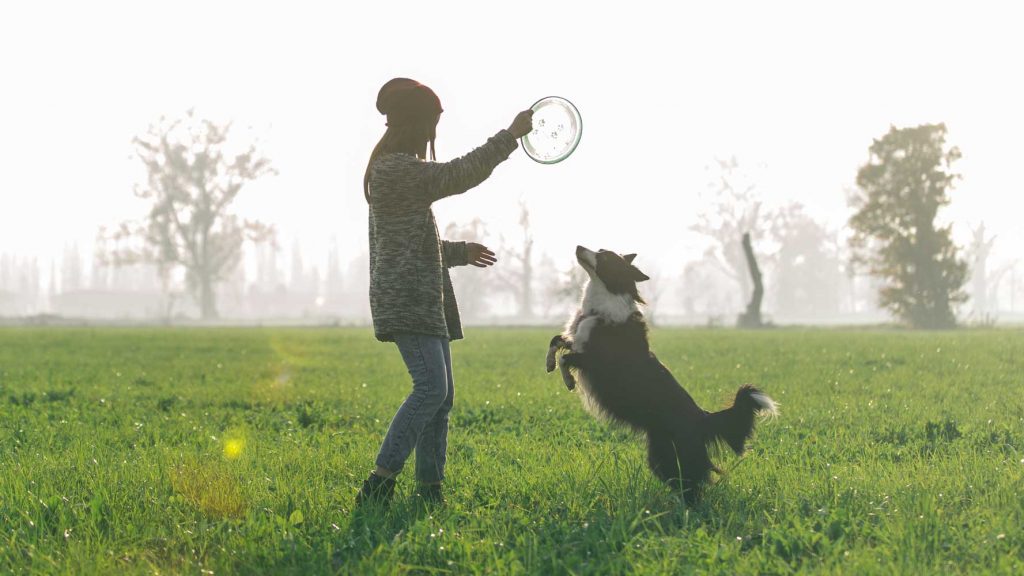
Positive training for puppies is a new way of looking at training for dogs, starting at a very young age, nurturing disciplinary values and skills that the puppy can learn and use as it grows, making the life of the trainer simpler and more indulgent with the dog.
Positive training for puppies is not a fairly recent construct. It has been around for years, but it has now gained a more prominent name. There are certain things to be aware of while indulging in positive training for puppies.
Firstly, it is essential to know the uses of positive reinforcement as a tool to instill positive thinking in not just the puppy but also the trainer. Secondly, there are certain things that must be taken care of while indulging in this healthy practice, which are highlighted in the article.
To first get into the details of positive reinforcement, it is essential to know the frame of mind behind the concept.
The main principle behind this type of training is a process called operant conditioning. By introducing a system of reward and punishment, the variances in behavior are recorded. Based on this, additional rewards are provided.
This concept was first initiated by B.F. Skinner, a behavioral psychologist, during the 1940s. It has grown and been adopted on a larger scale by famous dog trainers such as Cesar Millan.
This method is believed to work better than the "alpha dog" ideology based on dominance and punishments rather than giving dogs the free space to learn and grow without any fear of a harsh punishment.
It is similar to teaching a child tableside manners. You cannot scold the child every time they miss the point and do not perform up to the set standards. You have to be gentle, caring, understanding, and patient as dogs are man's best friends and deserve similar, if not the same, love and attention.
This paves the way for better communication and a positive outlook of training the little puppy to be more refined and disciplined.

Positive reinforcement has been deemed effective, long-lasting, humane and a safe approach toward training dogs. It is based on a reward system (and if required in extreme cases, a light punishment such as taking away a favorite toy). This system of reward and punishment allows the trainer to make the dog understand and differentiate right from wrong. It sometimes combines negative training which, unlike its gloomy name, does not mean a strict or horrible punishment for the dog; rather, it means disciplinary actions which may aid the dog in differentiating between what is permissible and what is not.
It is essential to always be alert of what type of disciplinary action you take while training the dog. Just like how humans hate being told what to do and being subjected to learn something that may take more than a couple tries to master and perfect, dogs have the same mindset. After all, they have their own lives and emotions as well, and they act according to their gut instinct. This may result in the dog acting out aggressively or letting you know through any adverse action that it is displeased.
It is also important to note that compulsive training is not recommended or liked by the dog. Most trainers will not inflict any pain on the dogs for fear of hurting them too much, while some trainers use shock collars. There are always better and less painful ways to discipline your dog, combining positive and a little bit of negative training systems.
It is essential to understand dominance. You cannot present yourself as the alpha dog and form an autocratic system of communication with your dog. This distorts the communication gap between the dog and the trainer as the dog may feel threatened, pressured, agitated or hostile. It is vital for the trainer to know that the dog may act up in a hostile way, but that does not mean you can assert dominance or purposely behave in that manner.
Dogs have a different language and mind than humans. They may be 'acting up' according to the trainer, but that may be their way of displaying affection, excitement, or even concern. Or it could even be that the dog is in pain or facing a trauma. Knowing your dog and how it feels is essential.
Remember, you and the puppy do not share the same language. Therefore, you must consider the puppy's point of view as well. A strong bond with your pup is not possible without your understanding of the situation from both perspectives, yours and the puppy's. For this, you require commitment and understanding of sensory languages that are based on emotion and behavioral reactions of the dog. It is crucial that you feel what the dog feels and reflect based on that.

Dogs have been domesticated and remain a loyal companion. It is our responsibility to act properly and give them the best we can offer.
It is a generally agreed upon notion that a reward-based system does help puppies grow into more refined and disciplined dogs. It is highly effective and humane, with dog experts like Cesar Millan also believing it to be a wonderful way to bond with one's dog. This positive training system allows the dog to be more aware of its surroundings and more loyal. This technique is highly effective. All it requires is your time and patience.
This technique is not just useful for the household and domesticated animals but for professional animals such as those with law enforcement officers and firefighters. Its method is quite simple; reward and very slight punishment (if required) are given based on the actions of the dog.
